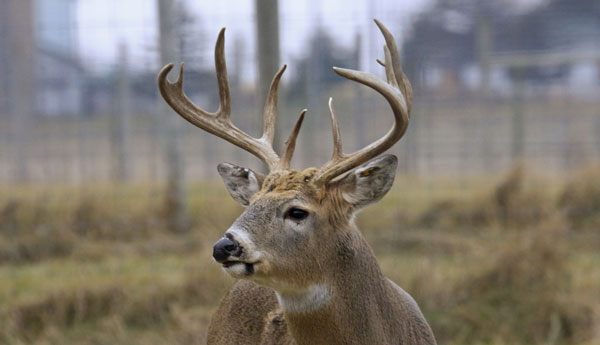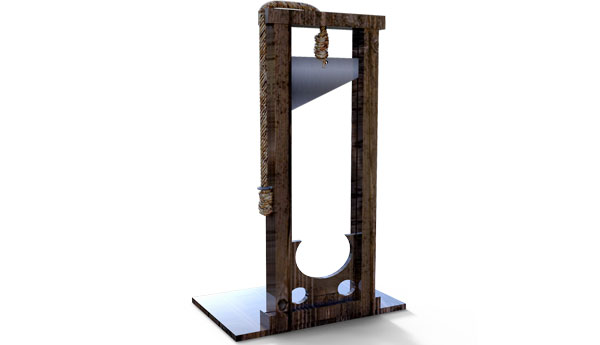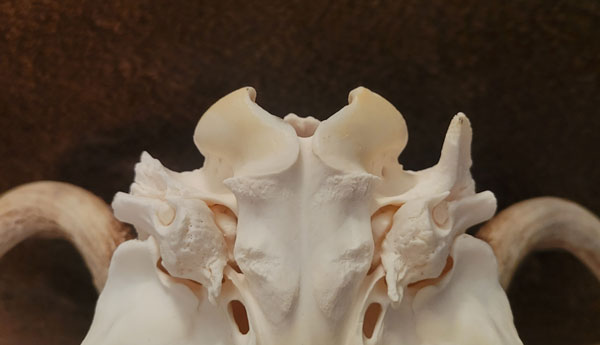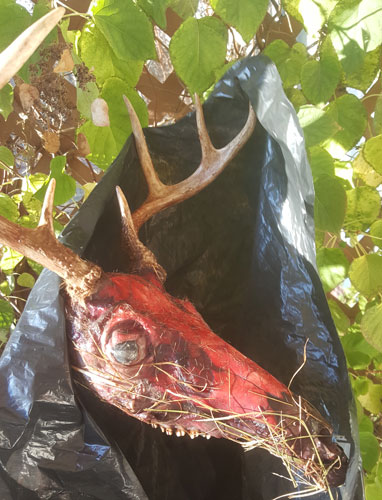
Unless you’ve found a deadhead that–miraculously–has some of the meat still attached, this probably seems odd timing for an article on the procedures for Euro-mounting a deer skull. There’s a reason for that. About halfway through the project this fall, I came down hard with the world’s favorite Coronavirus, and was forced to shelve it for a while (though I must admit, losing my olfactory senses made boiling endlessly more pleasant than usual). That said, the beauty of the internet is that this will still be here to reference this fall if you currently have no need of it, but if you’ve been saving the head of that big buck in a bag, unsure just what to do with it (*cough* looking at you Roy), here’s Part 1 of how to Euro-Mount a Deer Skull: Field Prep.
Removal
In the spirit of thoroughness, lets backtrack a step or two, to discuss how to actually remove a head from a deer. This sounds almost too simplistic to even discuss…right up until you get to that carcass, and realize just how many bones and connections exist to keep the head–particularly an animal head–tied firmly to its shoulders. Suddenly, a portable guillotine doesn’t sound like the worst idea!
 In all seriousness, I have removed heads every which way, from hatches, to knives, to bone saws, to full-blown axes and mauls, and the majority of times I came away with dull blades covered in viscera, until I figured a good system. Here’s the best way I have found.
In all seriousness, I have removed heads every which way, from hatches, to knives, to bone saws, to full-blown axes and mauls, and the majority of times I came away with dull blades covered in viscera, until I figured a good system. Here’s the best way I have found.
Put your knee on the deer’s neck, and rotate the skull around by the antlers (or, if you’re removing a doe skull for some reason, by the top of the head). With the fingers of your other hand, feel around for the pivot point, and the base of the skull. Once you’ve located it, take a small, sharp knife, and begin cutting away meat until you get to the vertebrae. Make sure to cut all the way around, but be mindful not to hack through the two flanges jutting out from the skull (it would take an inordinate amount of pressure with a knife, so you would definitely have to *try* to do it). Once the meat is severed through, give the skull a good twist–the skull should pop free from the vertebrae. If it doesn’t, keep trimming meat and connective tissue until it does. No hacking, no saws, and most importantly, no possibility of excess damage required.

Please keep in mind, if you plan on having the deer shoulder mounted, caped, or stuffed in ANY way, this is NOT what you want to do. Please take the carcass to your taxidermist, and let them do what they do best.
Skinning Out

Once the head is off the carcass, its time to skin it out. Take a long, sharp knife (I like the Gerber Gear Vital Big Game Folder Exchangeable Blade for this task, as there is no real way to avoid dulling a good blade skinning out a head), and carve all around the eyes. I like doing this first, as the skin is still tense around the area, making it easier to puncture and carve. Next, make some incisions around the base of the antlers, and start to pull the skin forward and off. Make sure to pay extra attention around the nose and eyes, as it has a habit of sticking a little extra here. From here, I have to tell ya, there is very little set process. Its dirty, gross work, and the only real rule is to get all the skin, and as much meat off as you can. I will offer you one final thing, however. After you’ve carved off the cheek meat, slit the muscles around the jaw as best you can toward the middle of the joint. Once done, this will make pushing the jaw forward and off the skull a MUCH easier proposition.
That’s all the room we have this time folks. Next in this series, we’ll cover the first steps toward getting your skull white and meat free. Hope you’ve enjoyed!
A humble homesteader based in an undisclosed location, Lars Drecker splits his time between tending his little slice of self-sustaining heaven, and bothering his neighbors to do his work for him. This is mainly the fault of a debilitating predilection for fishing, hunting, camping and all other things outdoors. When not engaged in any of the above activities, you can normally find him broken down on the side of the road, in some piece of junk he just “fixed-up.”

Mike Mullen says
I would suggest that when there is a series of articles on the same subject, links to the rest of the series would be helpful. Loved the article series! Very informative and a great help to the DIY folks out there. I do use aluminum foil roasters and pie plates from the dollar store for these activities. Cheap and disposable also scalable. A beaver skull doesn’t need same size as deer. I got a turkey fryer on the cheap and use that for my boiling. Antler bases I protected with painters tape.